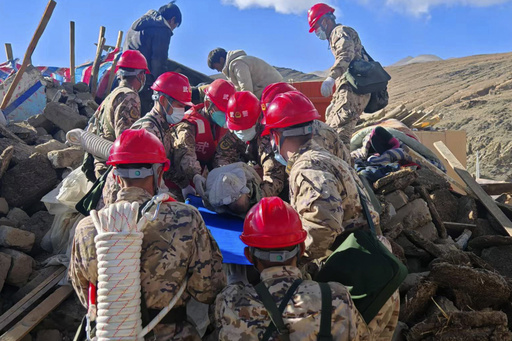Relief efforts are underway in Tibet after a devastating earthquake killed at least 126 people. Thousands of houses were flattened, leaving families homeless in freezing conditions. Temperatures in the high-altitude region dropped well below freezing overnight, making the need for shelter urgent.
Rescue operations in full swing
Rescue teams are working tirelessly to find survivors. Over 1,850 rescuers, including firefighters, are on the ground. They are searching through rubble and providing aid. The Ministry of Emergency Management confirmed their presence. Communications in the area have been restored, helping emergency goods reach those in need.
Death toll and injuries
The death toll stands at 126, with 188 people injured. Many victims are from Gurum village, where 22 of the 222 residents lost their lives. Among them was the mother of the village’s Communist Party chief, Tsering Phuntsog. He shared the difficulty of escaping the quake’s sudden force. “Even young people couldn’t run, let alone the elderly or children,” he said.

Massive destruction
More than 3,600 homes collapsed. A preliminary survey indicates 30,000 residents have been relocated. The earthquake measured 7.1 on the Richter scale, according to the U.S. Geological Survey. Chinese authorities recorded it as 6.8. Over 500 aftershocks were reported, intensifying fears and damages.
The holy city shaken
The quake struck near Xigaze, a holy city in Tibetan Buddhism. It is the traditional seat of the Panchen Lama, the second-highest figure in Tibetan Buddhism. The Tashi Lhunpo Monastery’s condition remains unclear. The epicenter was about 25 kilometers from Xigaze. This city sprawls across a high-altitude plain, 4,200 meters above sea level.
Historical tensions resurface
The quake has reignited political and cultural tensions. The Dalai Lama’s followers and the Chinese government have long disputed the position of the Panchen Lama. A boy appointed by the Dalai Lama disappeared in the 1990s. China’s choice for the role remains unrecognized by many Tibetans. This feud reflects broader tensions between China and the Tibetan community.
Political statements
Chinese leader Xi Jinping called for “all-out rescue efforts.” He emphasized minimizing casualties and rebuilding quickly. Meanwhile, Chinese Foreign Ministry spokesperson Guo Jiakun criticized the Dalai Lama’s planned prayer ceremony for the victims. “We remain highly vigilant of his separatist nature,” Guo said. Guo also expressed confidence in the Communist Party’s leadership during the recovery process.
Vigil in dharamsala
In Dharamsala, India, home to the Dalai Lama and a large Tibetan population, a candlelight vigil was planned for Wednesday night. On Thursday, the Dalai Lama will lead prayers for the victims. These ceremonies highlight the deep emotional connection between Tibetans in exile and their homeland.
Mount Everest shaken
The quake’s impact reached as far as Mount Everest and Nepal. Residents in Nepal’s capital fled their homes as the tremors struck. The earthquake’s proximity to such iconic landmarks underscores the widespread nature of the disaster.
Emergency supplies delivered
Tents, quilts, and other relief items have started arriving. These supplies are crucial as temperatures drop. Families with uninhabitable homes now have some protection against the cold. However, the high-altitude terrain makes deliveries challenging.
Restricted access for foreign media
Tibet remains largely closed to foreign journalists. This restriction stems from international criticism of China’s treatment of Tibetans. Reports of cultural suppression and political control frequently emerge from the region. Despite this, rescue efforts are being closely monitored by state media.
Tibet is grappling with immense tragedy and harsh conditions. Rescue workers continue their fight to save lives and provide aid. Political and cultural tensions add another layer to the crisis. Yet, in the face of adversity, the resilience of the Tibetan people shines through. As relief pours in, the hope for rebuilding grows stronger.